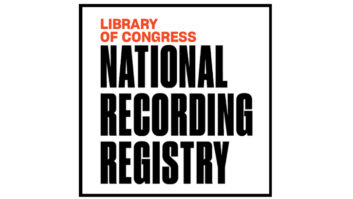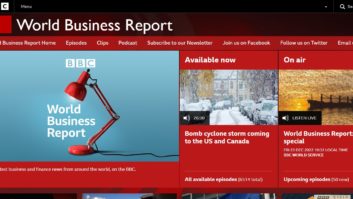As digital radio succeeds in the U.K., the rest of the world should learn why
The relatively slow progress of digital radio services worldwide has been noted frequently on these pages and elsewhere. This has been affected both by extended policy debate, as in the United States, as well as by sluggish commercial deployment, as in Europe.
Now that it appears the U.S. market is finally moving into the commercialization stage for digital radio, it’s worthwhile to examine the European market, where DAB has been commercially available for several years, to see if any lessons in avoiding further indolence can be learned.
If you build it …
As it turns out, a bit of a controlled experiment appears to be emerging in the European DAB environment.
DAB’s success varies country to country, but a clear standout so far is the United Kingdom, where DAB now is a major hit, and appears on its way to killer-app status. Meanwhile, most other European countries are reporting fairly stable but slow growth. What’s making the U.K. experience so different?
Not surprisingly, “It’s the services, stupid.” The U.K. is the only country where a substantial number of radio services are available exclusively on DAB. In fact, there are now more DAB-only services in the U.K. than DAB simulcasts (the latter simply duplicating existing AM/MW or FM channels).
Of the 362 DAB services operating across the U.K., 190 are only available via DAB, while 172 are simulcasts, as reported by the Digital Radio Development Bureau, a trade association formed by the BBC and commercial DAB operators promoting DAB in the U.K.
The pivotal role of quantitative growth in new media adoption by consumers has become a familiar refrain to readers of this column, although it bears repeating, having apparently been proven once again. The single and universally most influential driver of acceptance for new delivery formats is the availability of exclusive new services. Simple quality enhancements only appeal to an enthusiast fringe, while the existence of additional content not accessible via other means appeals to mainstream consumers. The U.K. has obviously decided that the chicken-and-egg cycle should be broken by offering new services first, and this appears to be a successful strategy.
As the DAB-only services have emerged in Britain, a closely correlated rise in receiver sales has taken place, with a reported DAB penetration increase in U.K. homes of 222 percent during 2003. More than 300,000 DAB receivers were sold last year in the U.K., with most occurring during the holiday period at year’s end.
Dixons Group, a leading U.K. electronics retailer, reported that portable DAB radios outsold portable analog receivers in its stores during the 2003 holiday season, accounting for 85 percent of portable radio revenues. (This category includes tabletop portables as well as personal/pocket radios.)
Many new and less-expensive receivers also became available in 2003, some selling for as low as £65 (~$120). This trend is expected to continue and accelerate in 2004 and beyond.
Cross-promotion
Another key factor in the U.K. appears to be a fairly well-coordinated PR blitz that has heightened DAB awareness nationwide.
The BBC frequently mentions its DAB offerings – it currently provides five DAB-only, full-time services – on its other radio and TV channels, and its commercial counterparts do the same for their DAB services. Radio Times magazine, a popular TV and radio program listings publication, includes numerous articles on DAB, and gives away a DAB radio every week as a prize in its “Letter of the Week” contest.
Digital television systems in the U.K. also carry some DAB channels as audio-only services, which allows many Britons to sample the DAB services through their TV systems before purchasing a receiver.
The presence of a well-funded evangelism group in DRDB also has helped mobilize a coherent promotional strategy. A recent survey indicated 43 percent of the British public knows about DAB, which equates to 25 million people.
Across the pond
Naturally, the U.K. and U.S. broadcasting businesses are dissimilar in many ways, so some of these processes will not translate well.
The most important distinction is how new services will be offered. In an IBOC environment, all primary audio services are inherently simulcast. Therefore the only new services possible in U.S. digital radio are those that will be carried in the datacasting part of the IBOC service. These could include text, graphics and secondary audio services (for example, those envisioned by the Tomorrow Radio project; see RW, March 1).
But to enable a U.K.-styled leveraging of service growth in U.S. digital radio, IBOC’s “auxiliary” datacasting services must be receivable by the majority of IBOC radios in the marketplace. If IBOC datacasting features are only included on a rarefied breed of high-end receivers, then the strong penetration impact of new services exhibited in British DAB will never occur in the United States.
Of course, first-generation IBOC receivers will not include this capability, as it is not yet fully determined or standardized. When completed, however, the FCC should take the same approach it does for other incremental improvements, introducing a phase-in schedule by which the new feature must be included in product offerings – such as was done for closed captioning on analog TV, and as is underway for digital terrestrial and cable tuners in DTV sets – ultimately reaching 100 percent of all new receivers sold. This could significantly enhance and accelerate the adoption of IBOC digital radio in the United States, and lead to greater listener satisfaction with American terrestrial radio services.
The U.K. is certainly doing something uniquely right in its launch of digital radio services, and the rest of the world should take heed.












